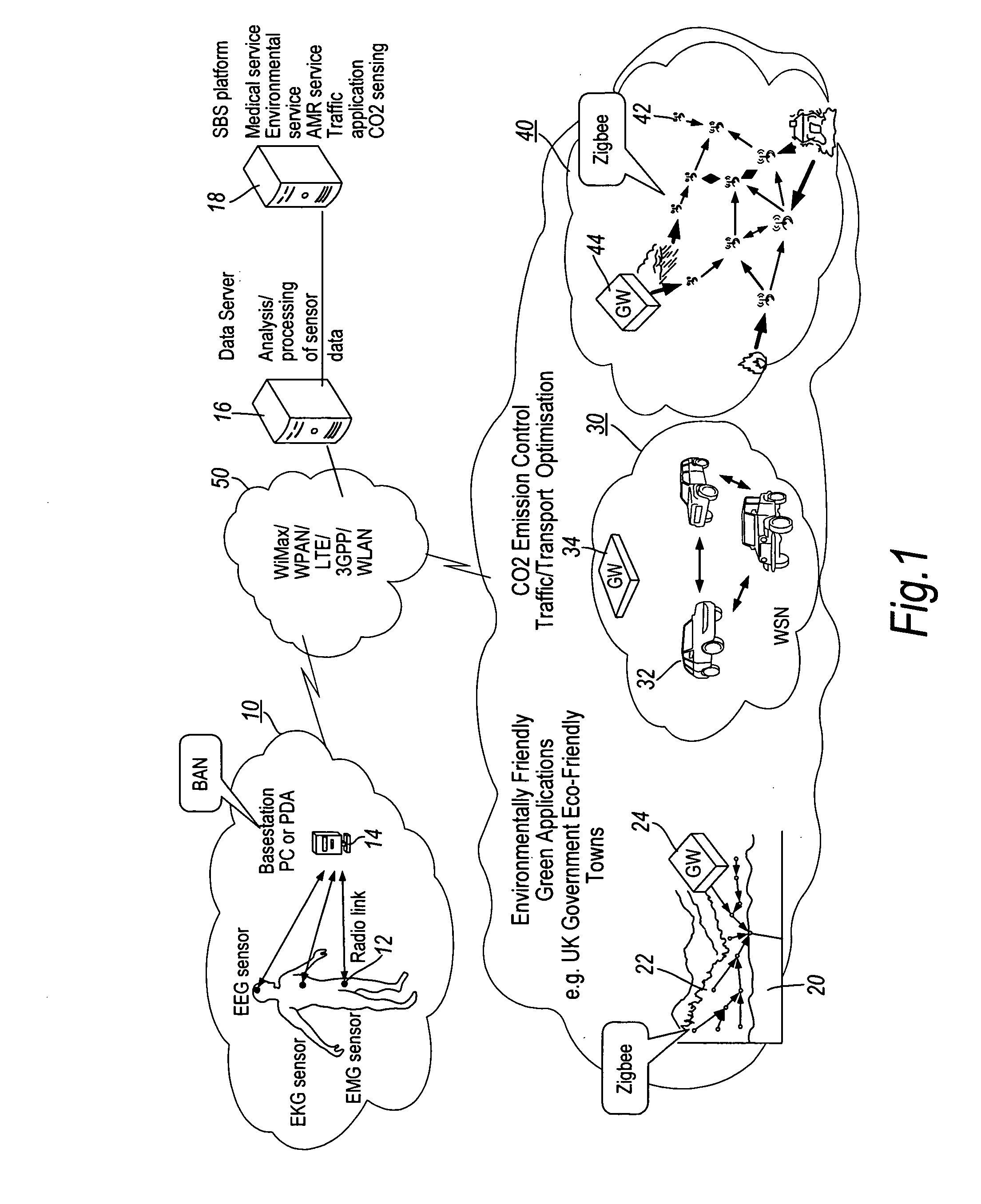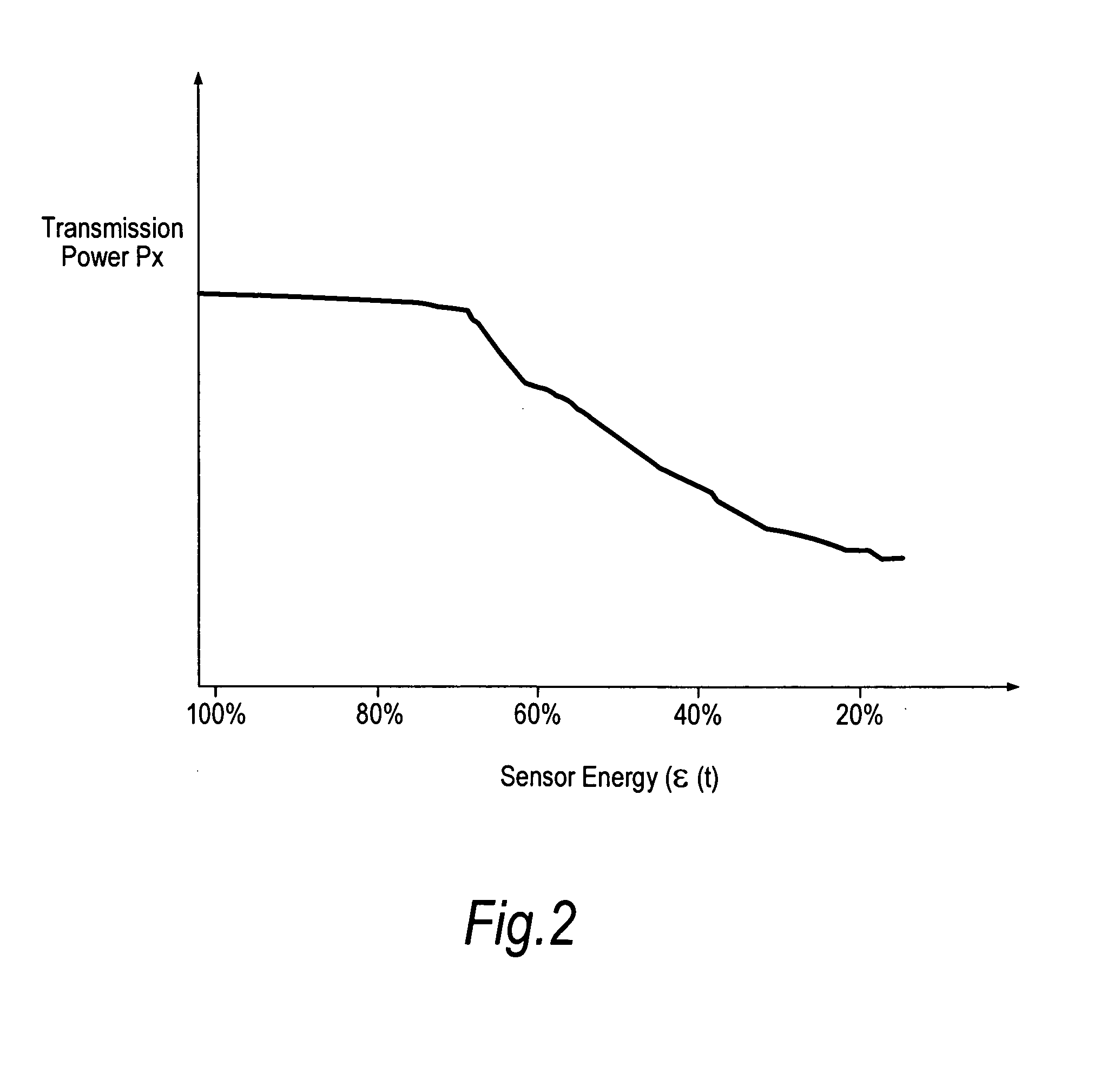Wireless sensor networks
a sensor network and wireless technology, applied in the field of wireless sensor networks, can solve the problems of low computational ability, power consumption of sensors is a major consideration, and transmission of data is typically the most power-hungry function of a sensor
- Summary
- Abstract
- Description
- Claims
- Application Information
AI Technical Summary
Benefits of technology
Problems solved by technology
Method used
Image
Examples
first embodiment
[0077]A first embodiment of the present invention will now be described with reference to FIGS. 4 to 9, showing steps of a sink positioning method.
[0078]The first embodiment takes into account changes of the maximum transmission rate I(t) for different communication links from sensor to sink, which changes occur due to movements of sensors and their changes of status as well as (possibly) changes in ambient conditions.
[0079]1. The method of the present invention has to be triggered in some way. The trigger for the following steps may be provided by the current sink, i.e. one of the sensors, observing a significant reduction in data it receives (for example, the amount of data per unit time falling below a predetermined threshold). The cause of such a reduction might be, for example, failure of a nearby sensor / relay, but the sink would not normally know this directly. A steady or increasing data throughput to the sink would not normally be a trigger for performing the method. However...
second embodiment
[0109]The second embodiment takes account of the needs of the sensors more completely by introducing the concept of a “desired rate” for transmission by each sensor. Each sensor's desired rate depends on its remaining energy (see FIG. 2 again), the amount of data the sensor needs to transmit, and its distance from the sink (candidate sink).
[0110]To reduce battery drain when a sensor is located close to the sink, the sensor might deliberately reduce the transmission rate depending on the remaining energy in its battery. Conversely the sensor should preferably increase the rate when the buffer occupancy is high, so as to ensure that gathered data is passed to the sink in a timely manner. To capture both concepts, a three-dimensional table is provided in each sensor which maps the current energy level, buffer occupancy and distance from the sink to a unique desired transmission rate R so that:
R=3D_Table(ε(t),d,data) (11)
[0111]The second embodiment takes advantage of changes of the pro...
PUM
 Login to View More
Login to View More Abstract
Description
Claims
Application Information
 Login to View More
Login to View More - R&D
- Intellectual Property
- Life Sciences
- Materials
- Tech Scout
- Unparalleled Data Quality
- Higher Quality Content
- 60% Fewer Hallucinations
Browse by: Latest US Patents, China's latest patents, Technical Efficacy Thesaurus, Application Domain, Technology Topic, Popular Technical Reports.
© 2025 PatSnap. All rights reserved.Legal|Privacy policy|Modern Slavery Act Transparency Statement|Sitemap|About US| Contact US: help@patsnap.com



